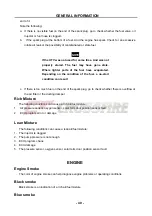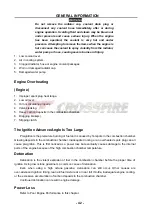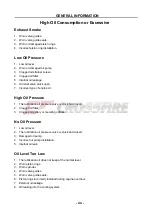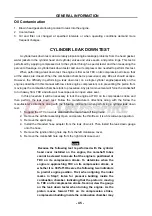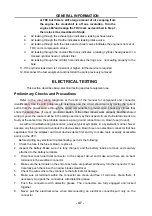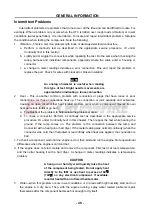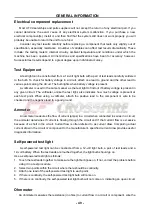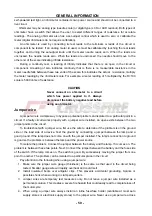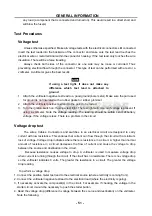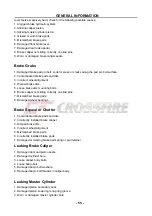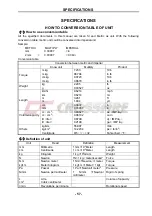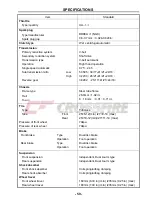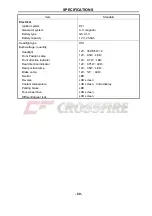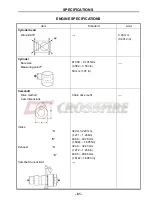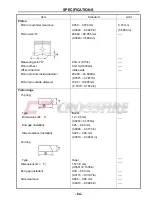
GENERAL INFORMATION
- 50 -
self-powered test light, an ohmmeter contains its own power source and should not be connected to a
live circuit.
Ohmmeter may be analog type (needle scale) or digital type (LCD or LED readout). Both types of
ohmmeter have a switch that allows the user to select different ranges of resistance for accurate
readings. The analog ohmmeter also has a set-adjust control which is used to zero or calibrate the
meter (digital ohmmeters do not require calibration).
An ohmmeter is used by connecting its test leads to the terminals or leads of the circuit or
component to be tested. If an analog meter id used, is must be calibrated by touching the teat leads
together and turning the set-adjust knob until the meter needle reads zero. When the leads are
uncrossed, the needle reads zero. When the leads are uncrossed, the needle should move to the
other end of the scale indicating infinite resistance.
During a continuity test, a reading of infinity indicates that there is an open in the circuit or
component. A reading of zero indicates continuity, that is, there is no measurable resistance in the
meter needle falls between these two ends of the scale, this indicates the actual resistance, multiply
the meter reading by the ohmmeter scale. For example, a meter reading of 5 multiplied by the R×100
scale is 5000 ohms of resistance.
CAUTION
Never connect an ohmmeter to a circuit
which has power applied to it. Always
disconnect the battery negative lead before
using an ohmmeter.
Jumper wire
A jumper wire is a simple way to bypass a potential problem and isolate it to a particular point in a
circuit. If a faulty circuit works properly with a jumper wire installed, an open exists between the two
jumper points in the circuit.
To troubleshoot with a jumper wire, fist use the wire to determine if the problem is on the ground
side or the load side of a device. Test the ground by connecting a jumper between the lamp and a
good ground. If the lamp does not come on with the jumper installed. The lamp’s connection to ground
is good so the problem is between the lamp and the power source.
To isolate the problem. Connect the jumper between the battery and the lamp. If it comes on. The
problem is between these two points. Next. Connect the jumper between the battery and the fuse side
of the switch. If the lamp comes on. The switch is good. By successively moving the jumper from one
point to another. The problem can be isolated to a particular place in the circuit
Pay attention to the following when using a jumper wire:
1. Make sure the jumper wore gauge (thickness) is the same as that used in the circuit being
tested. Smaller gauge wire will rapidly overheat and could melt
2. Install insulated boots over alligator clips. This prevents accidental grounding. Sparks or
possible shock when working in cramped quarters
3. Jumper wires are temporary test measures only. Do not leave a jumper wire installed as a
permanent solution. This creates a severe fire hazard that could easily lead to complete loss off
the motorcycle
4. When using a jumper wire always install an inline fuse/fuse holder (available at most auto
supply stores or electronic supply stores) to the jumper wire. Never use a jumper wire across





